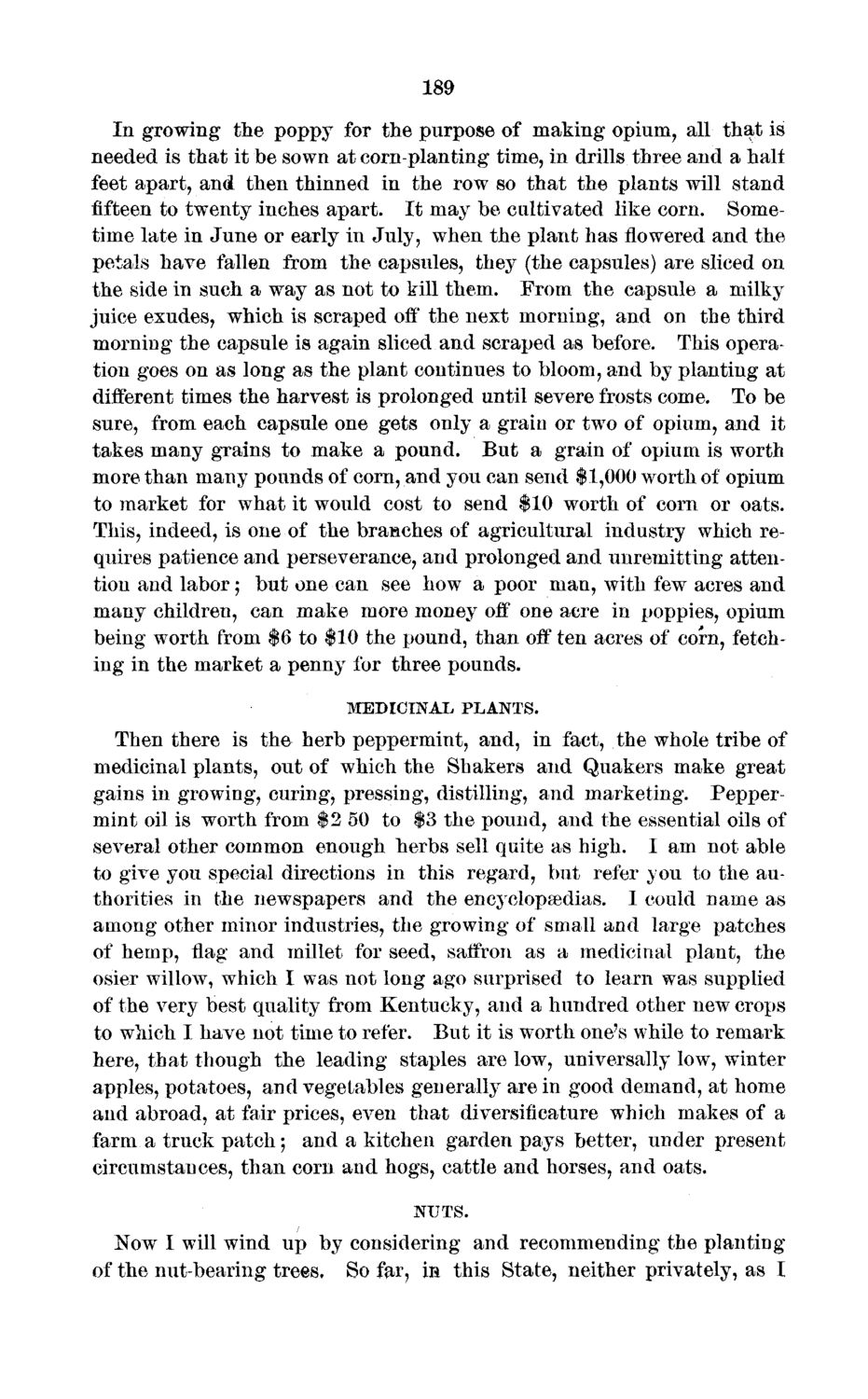| |
| |
Caption: Board of Trustees Minutes - 1873
This is a reduced-resolution page image for fast online browsing.

EXTRACTED TEXT FROM PAGE:
189 In growing the poppy for the purpose of making opium, all that is needed is that it be sown at corn-planting time, in drills three and a halt feet apart, and then thinned in the row so that the plants will stand fifteen to twenty inches apart. It may be cultivated like corn. Sometime late in June or early in July, when the plant has flowered and the petals have fallen from the capsules, they (the capsules) are sliced on the side in such a way as not to kill them. From the capsule a milky juice exudes, which is scraped off the next morning, and on the third morning the capsule is again sliced and scraped as before. This operation goes on as long as the plant continues to bloom, and by planting at different times the harvest is prolonged until severe frosts come. To be sure, from each capsule one gets only a grain or two of opium, and it takes many grains to make a pound. But a grain of opium is worth more than many pounds of corn, and you can send $1,000 worth of opium to market for what it would cost to send $10 worth of corn or oats. This, indeed, is one of the branches of agricultural industry which requires patience and perseverance, and prolonged and unremitting attention and labor; but one can see how a poor man, with few acres and many children, can make more money off one acre in poppies, opium being worth from $6 to $10 the pound, than off ten acres of corn, fetching in the market a penny for three pounds. MEDICINAL PLANTS. Then there is the herb peppermint, and, in fact, the whole tribe of medicinal plants, out of which the Shakers and Quakers make great gains in growing, curing, pressing, distilling, and marketing. Peppermint oil is worth from $2 50 to $3 the pound, and the essential oils of several other common enough herbs sell quite as high. I am not able to give you special directions in this regard, but refer you to the authorities in the newspapers and the encyclopaedias. I could name as among other minor industries, the growing of small and large patches of hemp, flag and millet for seed, saffron as a medicinal plant, the osier willow, which I was not long ago surprised to learn was supplied of the very best quality from Kentucky, and a hundred other new crops to which I have not time to refer. But it is worth one's while to remark here, that though the leading staples are low, universally low, winter apples, potatoes, and vegetables generally are in good demand, at home and abroad, at fair prices, even that diversificature which makes of a farm a truck patch; and a kitchen garden pays better, under present circumstances, than corn and hogs, cattle and horses, and oats. NUTS. Now I will wind up by considering and recommending the planting of the nut-bearing trees. So far, in this State, neither privately, as I
| |